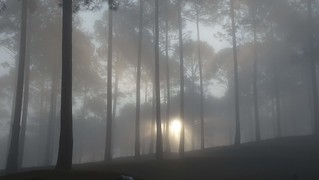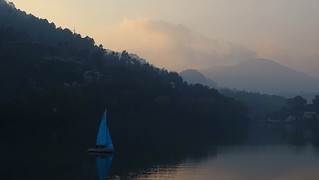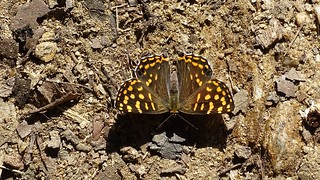Kumaon in late October
Things to do, and things to be careful about
Upper Kumaon is well known for adventure sports. The lake district is another well-known destination for "family" tourism. We mainly targeted the area in between, which is haunted by those who, like us, are interested in leisurely walks with binoculars and cameras. The whole of the Kumaon from above Naini Tal to below Kausani is their playing ground. The most well-known regions are Binsar WLS near Almora, and the Pangot and Kilbury villages in the Naina range. However, practically all of middle Kumaon is good for this kind of tourism.
October, especially around Diwali, is low season, so there is no problem in getting rooms. You can practically walk into a wonderful hotel anywhere except Naini Tal and bargain their rates down. This season is also reputed to give the best views of the Nanda Devi range. However, the week we spent in the vicinity of Almora was foggy and the view was hazy. A trip to Kausani did not improve the view.
The road network in middle Kumaon is quite reasonable, as hill roads in India go. It took around three hours to drive from Naini Tal to Almora. You have to watch out for roads under repair, though. We had one such experience when we tried to reach Ranikhet from Almora by Kosi, and had to turn back, because the road was under repair, and our progress was too slow. However, on every road trip we found a good spot for birding. Since it is unlikely that we were specially chosen by the Great Lammergeier In The Sky for good luck, it would seem that all of middle Kumaon remains a birder's paradise.
The ecology of the Kumaon has been disturbed wildly by the growth of imported pine forests. These barren forests have displaced the lively oak and deodars from many of the slopes along the old British residencies. Few plants grow in the shade of pines, no birds can be heard, and there is no movement except for the wisps of morning fog. We were told that mountain goats and leopards move through them at night. We did not see any. However, if you want to take long walks alone, it may be good to keep leopards in mind.
The beauty of the lake district is only slightly marred by development yet. We spent a couple of days and nights here just sitting in the sun drinking tea, or walking around a lake, or looking for bakeries. It is a wonderful way to relax, as weekenders from Delhi realized long before us. We were lucky to be there on weekdays. Naini Tal is crowded, but the lake front is with its promenade is clean and nice. There are also many other lakes, which, although smaller, are quite unspoilt.
Suprisingly, every person we had to deal with was nice and helpful. At no point did we feel we had to be careful. Our worst experiences were minor troubles created by nature. On any visit to a jungle you need to be careful about parasites. Leeches were not a problem at this time, although ticks were abundant.
Animals and Birds of Kumaon
Butterflies were suprisingly rare in the areas we visited. There were lots of common ones, leaf-yellows, hedge blues, gram blues, pierrot, and tortoise shells. We only spotted a single species, which we are yet to identify, which cannot be seen around a big city. Night-flying moths were plentiful: geometridae, fruit borers, sphingidae. Some of these can be seen in cities, but others were rarer. There were also a few colourful day-flying moths. There were lots of varieties of beetles and true bugs. The large number of woodpeckers also indicates abundant insect life.
Mid to late October was a little early for the arrival of the main migratory birds to Kumaon and northern India, at least this year. Perhaps a couple of weeks later a bird list would have been plumped up by these visitors. Although our list was small, it contained several lifers. This may be due to the fact that we have mainly done our birding earlier in the eastern Himalayas and around Mumbai.
A large part of our birding was done in the Binsar wildlife sanctuary. In the sanctuary we also saw a few large mammals. On our first entry to Binsar two yellow-throated Martens streaked across a meadow in front of us. We had a few views of barking deer. Unlike other visitors, we did not see leopards, although we heard their calls and saw their kills. We saw a group of jackals feeding on the remains of a leopard kill. There were also many tribes of monkeys and langurs everywhere, including in Binsar. There were no signs of the once-famous tigers of Kumaon. The meadows around the Panchachouli shop inside Binsar turned out to be great for birding.
We also saw a lot of birds behind the bazaar in Kosi township, just around the Kosi river. It is a good place to stop for an early breakfast and spend a couple of hours birding. Since it is near the junction of the roads from Almora, Ranikhet and Kausani, it is a convenient spot. We also did a surprising amount of birding at the hotel we stayed in, Kasaar Jungle Resorts on the Almora-Binsar road. All the major hotels on this road have kept a lot of vegetation on their property, and I suspect that they may all be good birding spots.
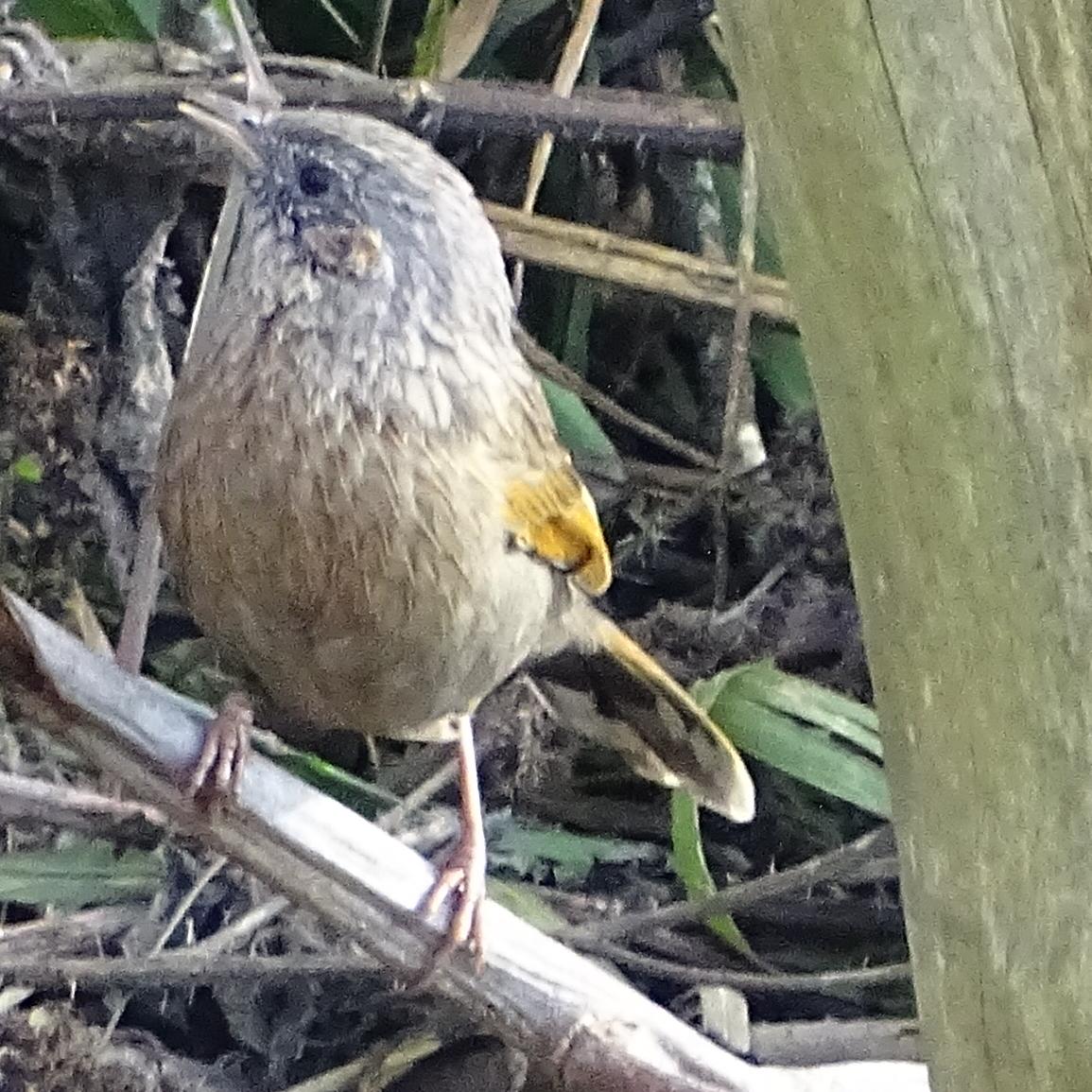 |
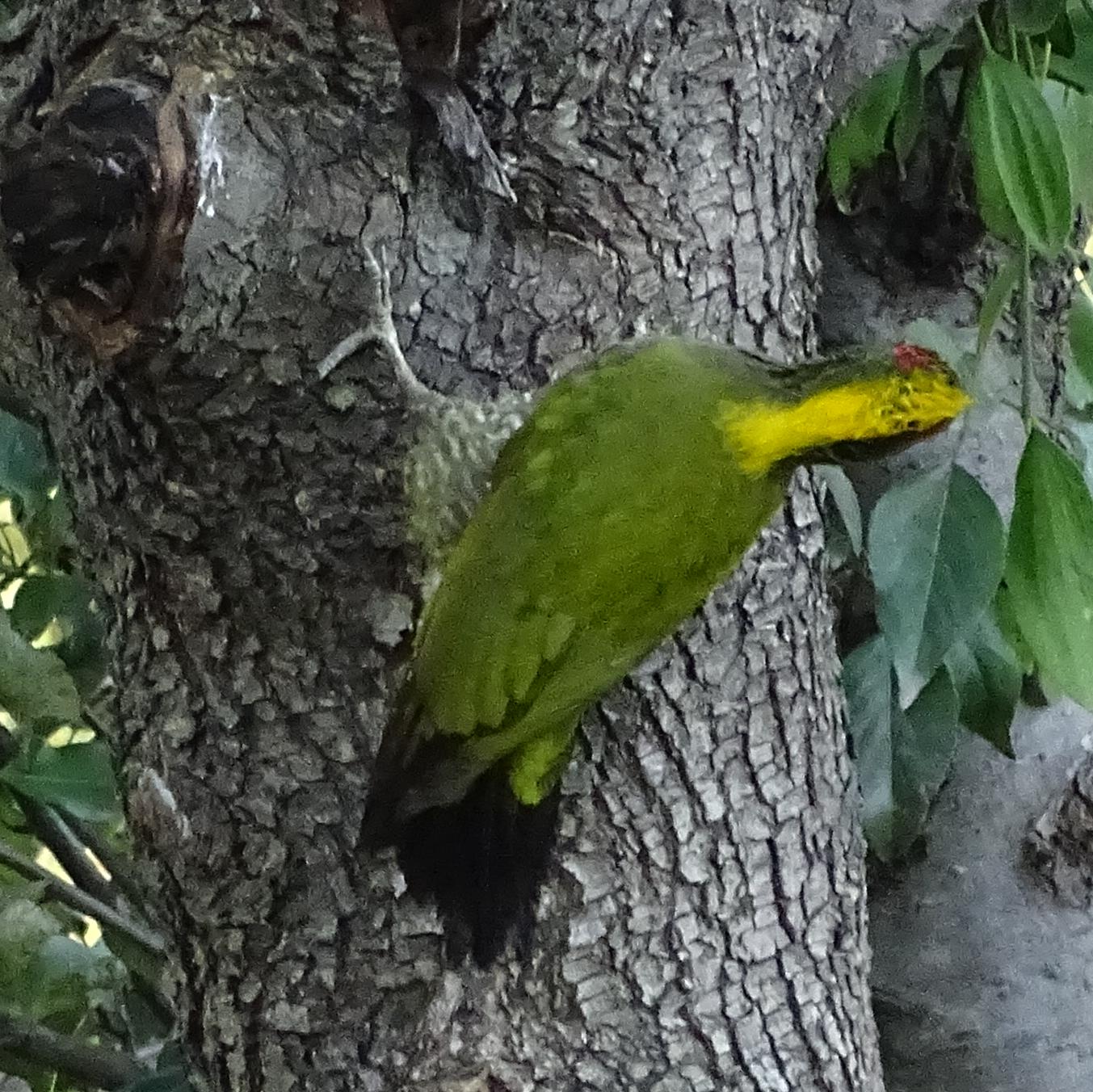 |
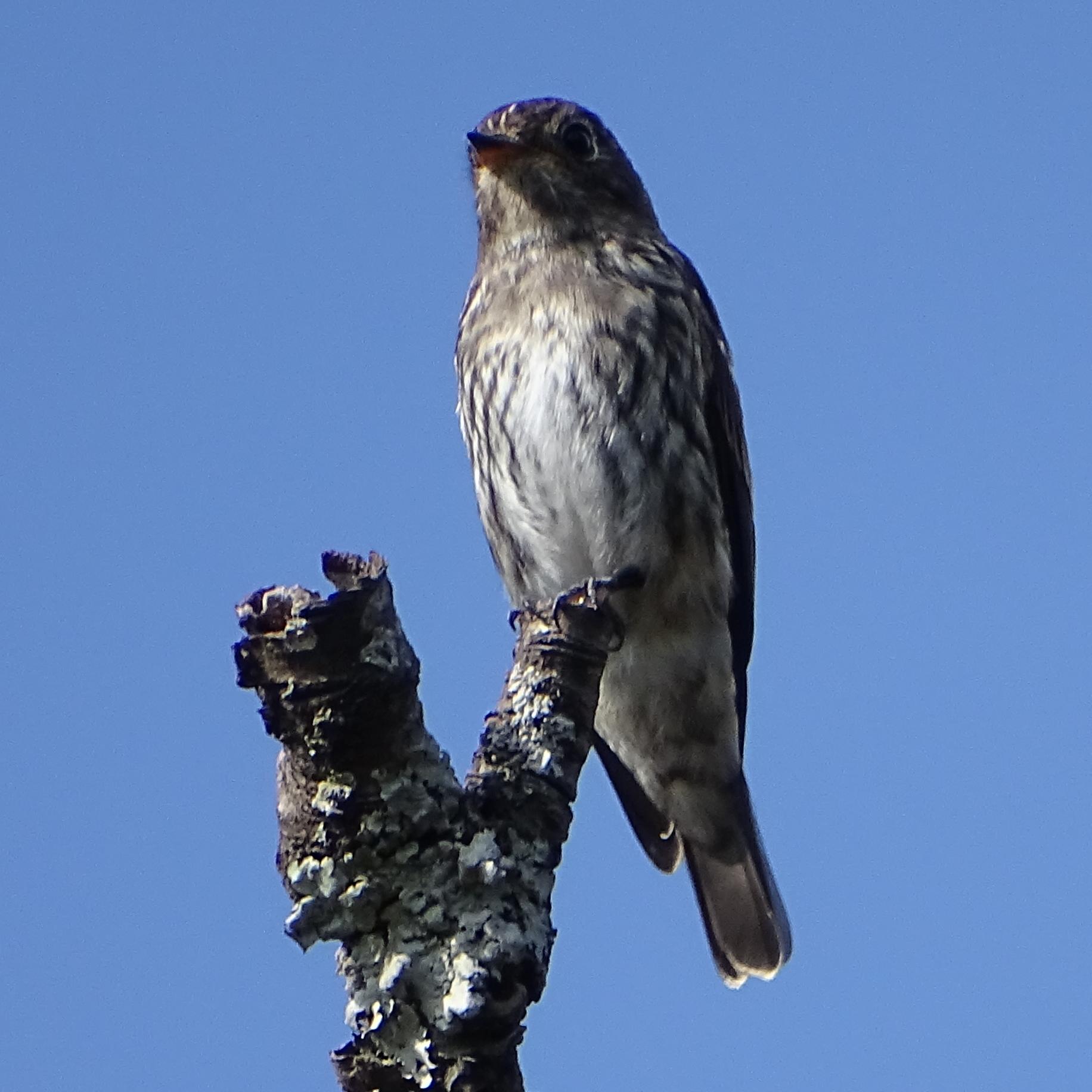 |
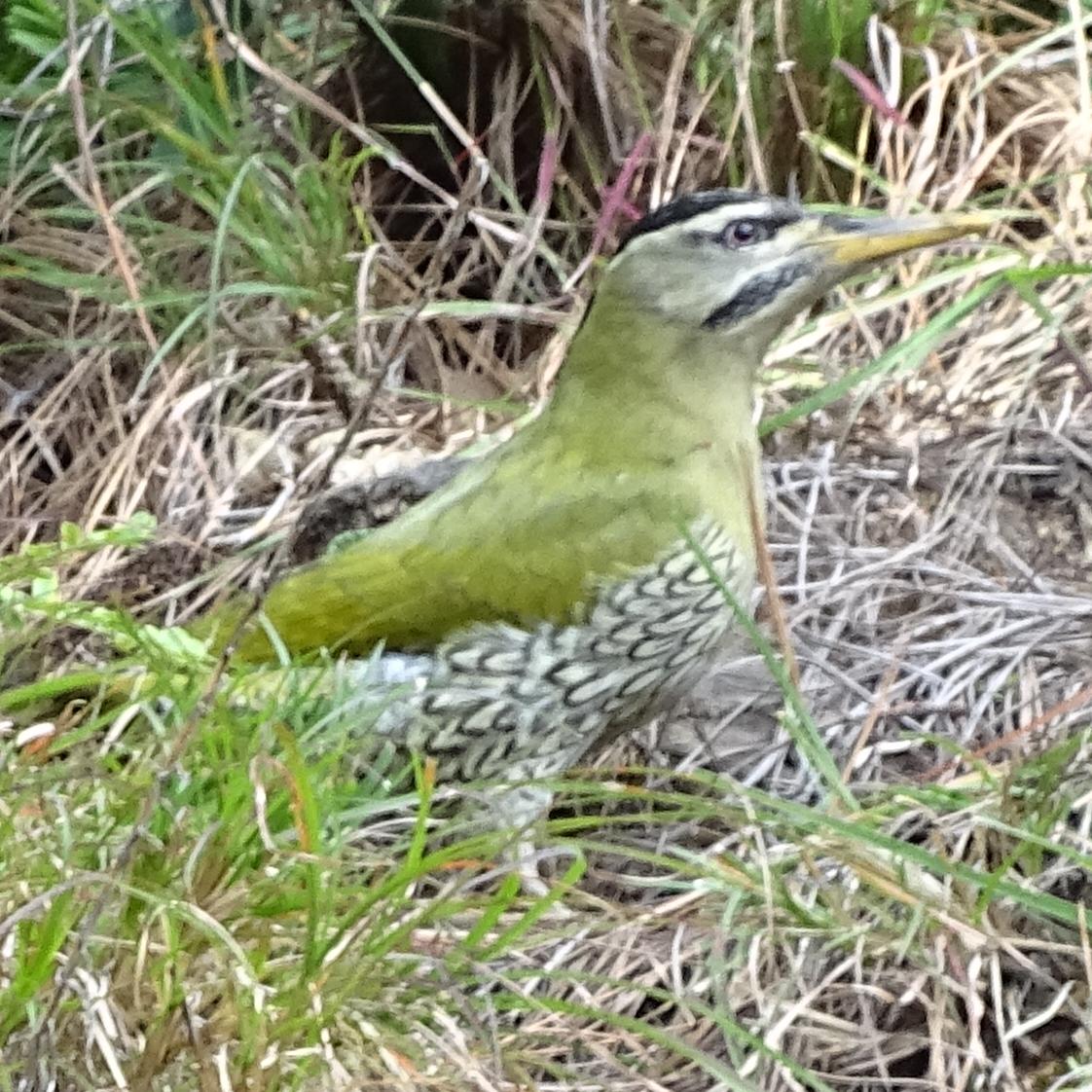 |
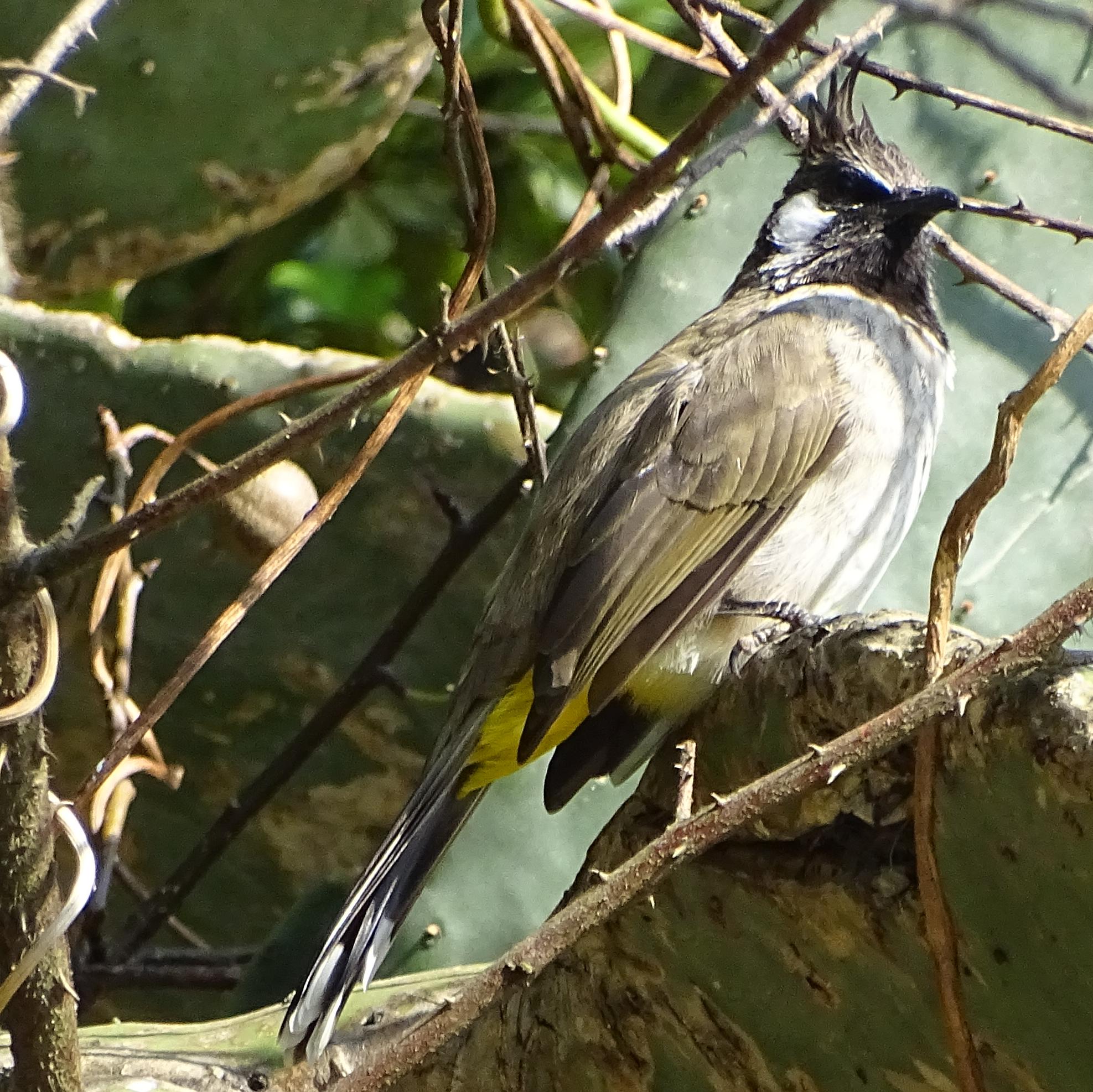 |
| A | B | C | D | E |
- Pariah kite
- Jungle crow
- Raven
- Blue rock-pigeon
- Oriental turtle-dove
- Drongo
- Hill myna
- Oriental magpie robin (male and female pair)
- House sparrow
- Russett sparrow
- Little egret
- Greater egret
- Cattle egret
- Indian pond heron
- Indian cormorant
- Yellow wagtail
- White-headed wagtail
- Black-lored tit
- Grey-backed tit
- Green-backed tit
- Great tit
- Grey-backed shrike
- Red-vented bulbul
- Himalayan bulbul (picture E)
- Dark-sided flycatcher (picture C)
- White-tailed nuthatch
- Oriental white eye
- Red-billed blue magpie
- Grey magpie
- Eurasian treepie
- Verditer flycatcher
- Brown-fronted woodpecker
- Himalayan woodpecker
- Lesser yellow-naped woodpecker (picture B)
- Scaly-bellied woodpecker (picture D)
- Blue-fronted redstart
- White-capped redstart
- Grey-headed warbler
- Long-tailed minivet
- Eurasian jay
- Black-headed jay
- Streaked laughing thrush
- White-throated laughing thrush
- Blue whistling thrush
- Striated laughing thrush
- Rufus sibia
- Great barbet
- Koklass pheasant
- Mountain hawk-eagle
- Himalayan buzzard
- Himalayan vulture
- Crested serpent-eagle
© Sourendu Gupta. Inputs from Radiya Pacha Gupta. Created on 2 Nov 2014.
